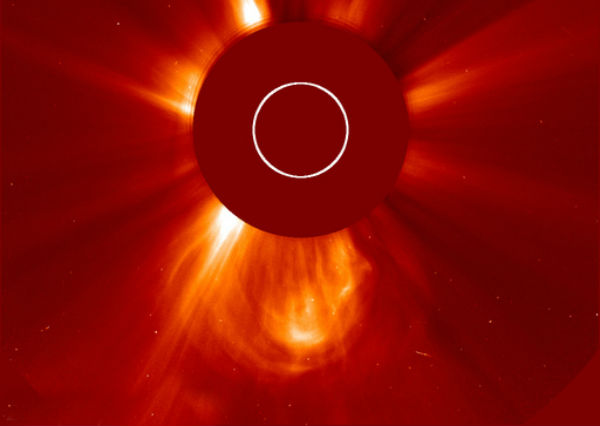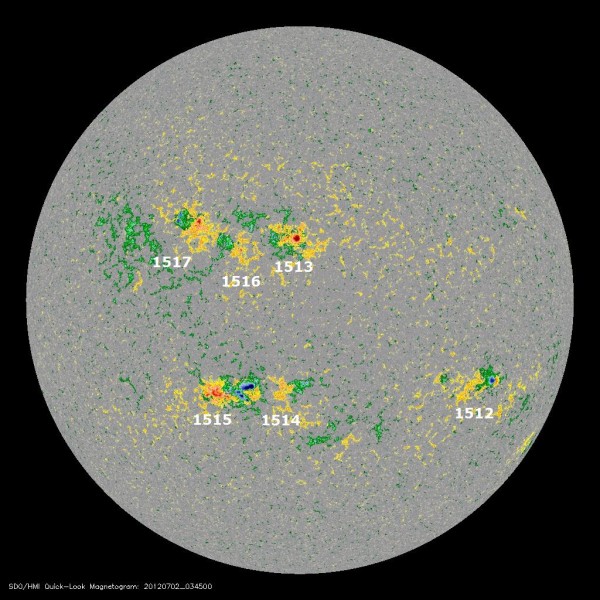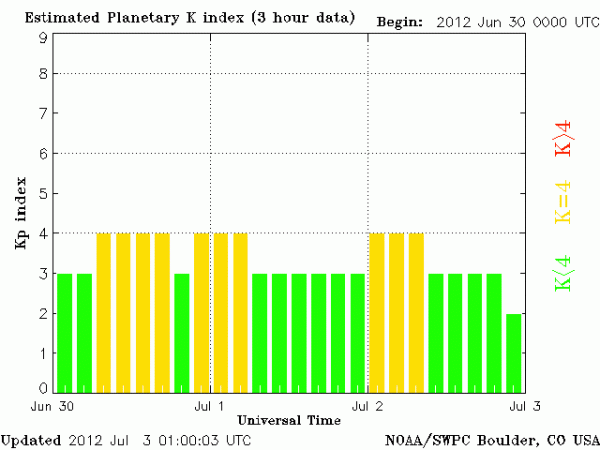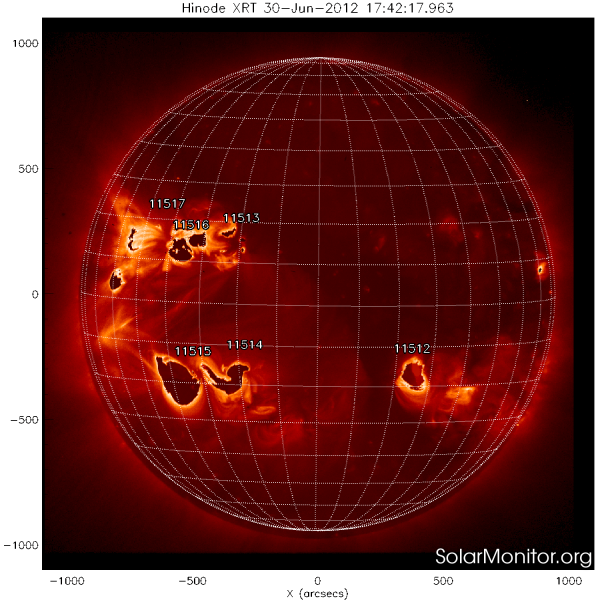Increased solar activity – Third M-class solar flare from Sunspot 1515

Solar Activity continues at moderate to high levels. A minor C6 solar flare around Sunspot 1513 was followed up with yet another M-Class flare around Sunspot 1515. The latest blast peaked at M2.0 and the time of the event was 23:56 UTC.


This large Sunspot cluster appears poised to generate a major solar flare within the next couple of days. NOAA/SWPC gives 70% chances of M-class event and 5 % chances for X-class events.

NOAA/SWPC issued Moderate R2 RadioBlackout alert. It means limited blackout of HF radio communication on sunlit side, loss of radio contact for tens of minutes and degradation of low-frequency navigation signals for tens of minutes.

CURRENT CONDITIONS:
Solar wind
speed: 594.2 km/sec
density: 0.3 protons/cm3
The Radio Sun
10.7 cm flux: 133 sfu
Planetary K-index
Now: Kp= 2 quiet
24-hr max: Kp= 4 unsettled
Interplanetary Mag. Field
Btotal: 3.7 nT
Bz: 1.5 nT south


Joint USAF/NOAA Report of Solar and Geophysical Activity (2200Z on 02 Jul 2012)
Solar activity increased to high levels. Region 1515 (S17E04) produced an impulsive M5/2b flare at 02/1052Z associated with a Type II radio sweep (estimated shock speed 1063 km/s), a 380 sfu Tenflare, and a coronal mass ejection (CME) with most of the mass directed southward, out of the ecliptic plane. It also produced an impulsive M3/2b flare at 02/2007Z associated with a 190 sfu Tenflare. This region remained large and magnetically complex (beta gamma-delta). Region 1513 (N16W09) produced an impulsive M1/1n flare at 02/0035Z as well as frequent B- and C-class flares. Gradual spot growth was noted in its intermediate and trailer portions and it retained its beta-gamma magnetic configuration. No new regions were numbered.
Solar activity is expected to be moderate during the period (03 – 05 July) with M-class flares expected from Regions 1513 and 1515.
Geomagnetic field activity was at unsettled to active levels with minor to major storm levels detected at high latitudes. This activity was associated with a persistent coronal hole high-speed stream (CH HSS). ACE data indicated solar wind speeds in the 580 – 722 km/s range with no discernible trend. IMF Bz was variable and ranged from +6 nT to -5 nT. Todays observed Penticton 10.7 cm flux (166 sfu) was flare-enhanced due to the M3/2b at 02/2007Z. The greater than 2 MeV electron flux at geosynchronous orbit reached high levels during the period.
Geomagnetic field activity is expected to remain at unsettled to active levels on day 1 (03 July) as CH HSS effects persist. Activity is expected to decrease to quiet to unsettled levels during days 2 – 3 (04 – 05 July) as CH HSS effects gradually subside. The CME associated with todays M5/2b flare is not expected to disturb the field during the forecast period.

[…] The Watchers – Increased solar activity – Third M-class solar flare … Solar Activity continues at moderate to high levels. A minor C6 solar flare around Sunspot 1513 was followed up with yet another M-Class flare around Sunsp.thewatchers.adorraeli.com/…/increased-solar-activity-another-… […]
[…] Increased solar activity – Third M-class solar flare from Sunspot 1515 […]